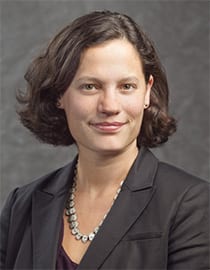By Andrew Cohen

During his election campaign last year, Philadelphia District Attorney Larry Krasner vowed to dismantle institutional inequities in sentencing, parole, bail, and incarceration. After winning in a landslide, he promptly fired 31 prosecutors who he thought did not value that agenda.
On May 24, Krasner moderated a livestreamed panel of youth justice experts at Berkeley Law’s East Bay Community Law Center (EBCLC). Co-hosted by the Justice Collaborative Engagement Project, the event focused on reforming juvenile justice in Alameda County and across California—and on prosecutors’ role in achieving that reform.
Regarding the juvenile justice system’s stark racial imbalances, Krasner said, “Discrimination is one of our great challenges. Let’s not make the mistake I’ve heard for 30 years as an attorney, that this one ‘from a good family’ gets a pass.”
Krasner expressed optimism for meaningful reform on two fronts: growing public dismay with mass incarceration, and lawyers’ shifting perceptions of juvenile justice work. “It’s no longer a place where young attorneys cut their teeth to go do what matters,” he said. “It’s now a space where some career prosecutors stay to the end and do incredibly important work.”
Panelists criticized the costs of juvenile detention and its common structure, with youth routinely housed 200 to 300 miles away from their families. Krasner lauded New York’s Closer to Home initiative, where juveniles stay in facilities in or near their home community, as less expensive and more successful.
“Connections between youth and their families and communities are extremely important to the possibility of rehabilitation,” he said. “Once you break those connections and don’t have education, you end up with a high level of recidivism.”
Prosecutorial discretion, police accountability
Panelists urged greater discretion from prosecutors in order to lower youth incarceration rates and foster rehabilitation.
Kate Weisburd, who directs EBCLC’s Youth Defender Clinic, noted that prosecutors play a “huge role” in the school-to-prison pipeline given their frequent pursuit of cases that originate in schools. She said about half of youth detained in Alameda County were suspended or expelled from school, and that the majority are there for probation violations rather than actual offenses.

“What prosecutors do in juvenile court is by law hidden from public view,” Weisburd explained. “It’s hard to keep prosecutors accountable to the public when the system is shrouded in secrecy.”
Zach Norris, who worked to close five of California’s eight youth prisons as executive director of the Ella Baker Center for Human Rights, bemoaned the juvenile system’s racial disparities. According to 2016 California Department of Justice data, African-American youth are far more likely than white youth to be arrested (4.4 times), detained (7.6), given probation (3.3), removed from their family’s home (4.4), and moved to adult court (5.9).
Having grown up in East Oakland and attended Harvard, Norris observed “two systems of justice: a punishment-oriented system for youth of color and a system for affluent folks with drug treatment and counseling.” He called for more prosecutorial fairness and for district attorneys to hold police accountable for misconduct.
Restorative justice push
Panelists also touted restorative justice measures and their role in reducing recidivism and detention costs. Berkeley Law lecturer nuri nusrat, a senior program associate at Impact Justice, described the process of bringing together those who caused harm, their victims, and affected community members to repair and rebuild relationships.

“What if the justice we sought honored the dignity and humanity of everyone involved?” she said. nusrat stressed “healing for both parties involved so that the harm doesn’t happen again, attending to victim needs, and making sure people of color aren’t disproportionately punished.”
Traditional juvenile adjudication separates the perpetrator from the victim, who is kept outside the courtroom. By contrast, restorative justice protocol brings the parties together in a neutral space—requiring everyone involved to formally agree to participate, with all stages of plan design and follow-through monitored by the given organization and facilitator.
A recent restorative program in Alameda County found that 18 percent of participants committed another delinquent act within a year of completion, compared to 32 percent of those processed in the traditional juvenile system. Katherine Weinstein Miller, chief of programs and initiatives for the San Francisco District Attorney’s Office, said the recidivism rate in that unit’s program was 16 percent versus 39 percent for non-participants.
“We hope to extend restorative justice to more serious juvenile cases and to young adults,” she said. “The recidivism rate numbers are important, but when we think about the model’s value … there’s also the satisfaction of what both sides walk away with.”